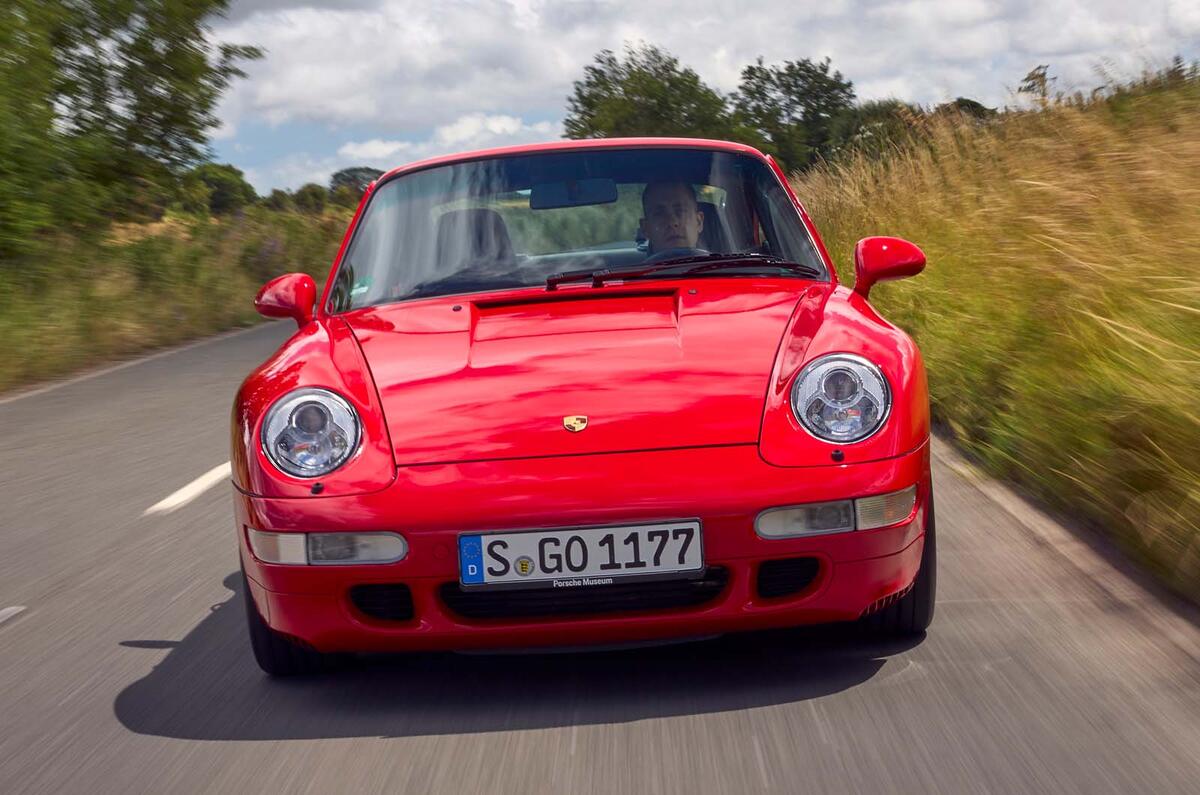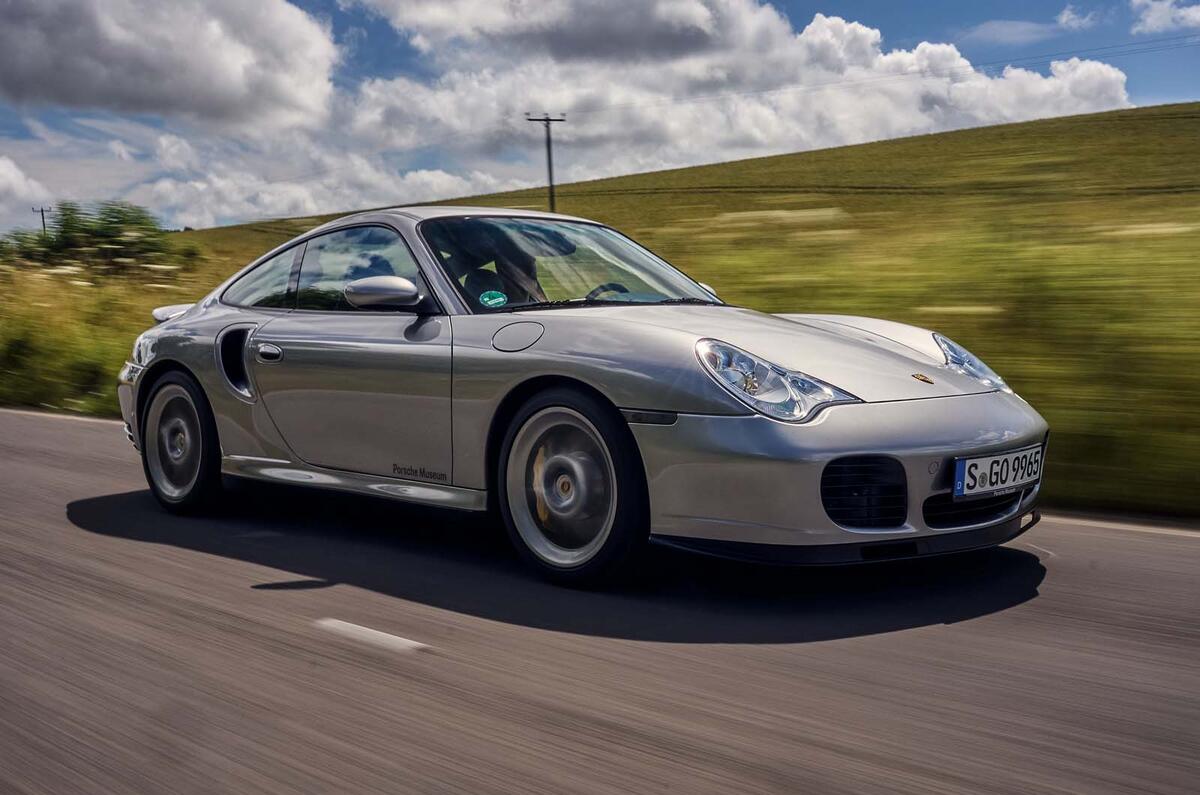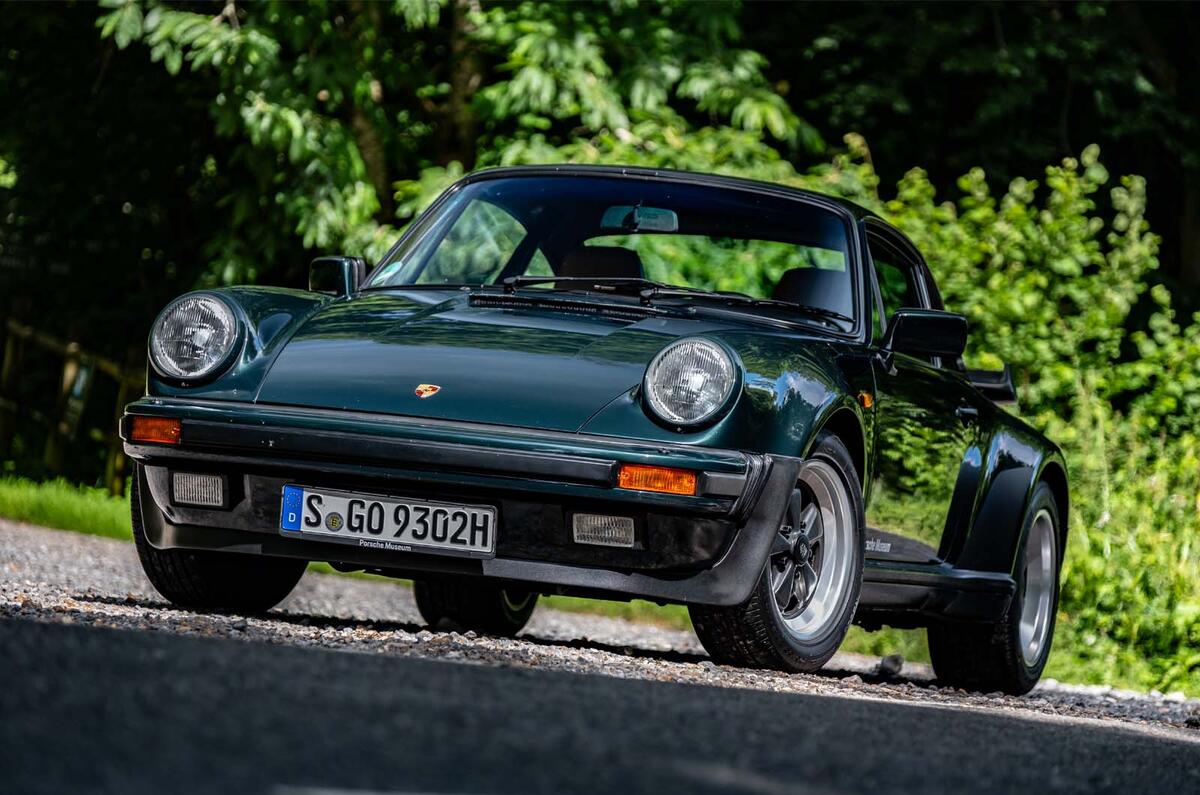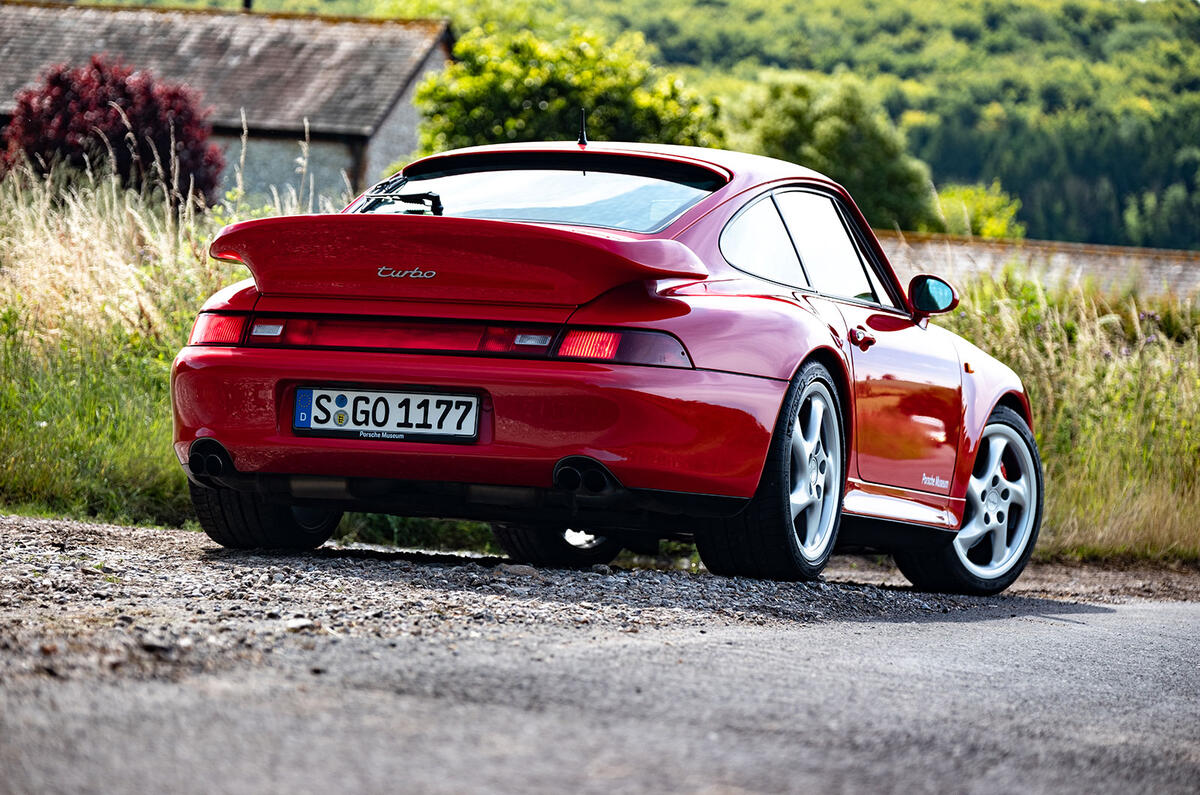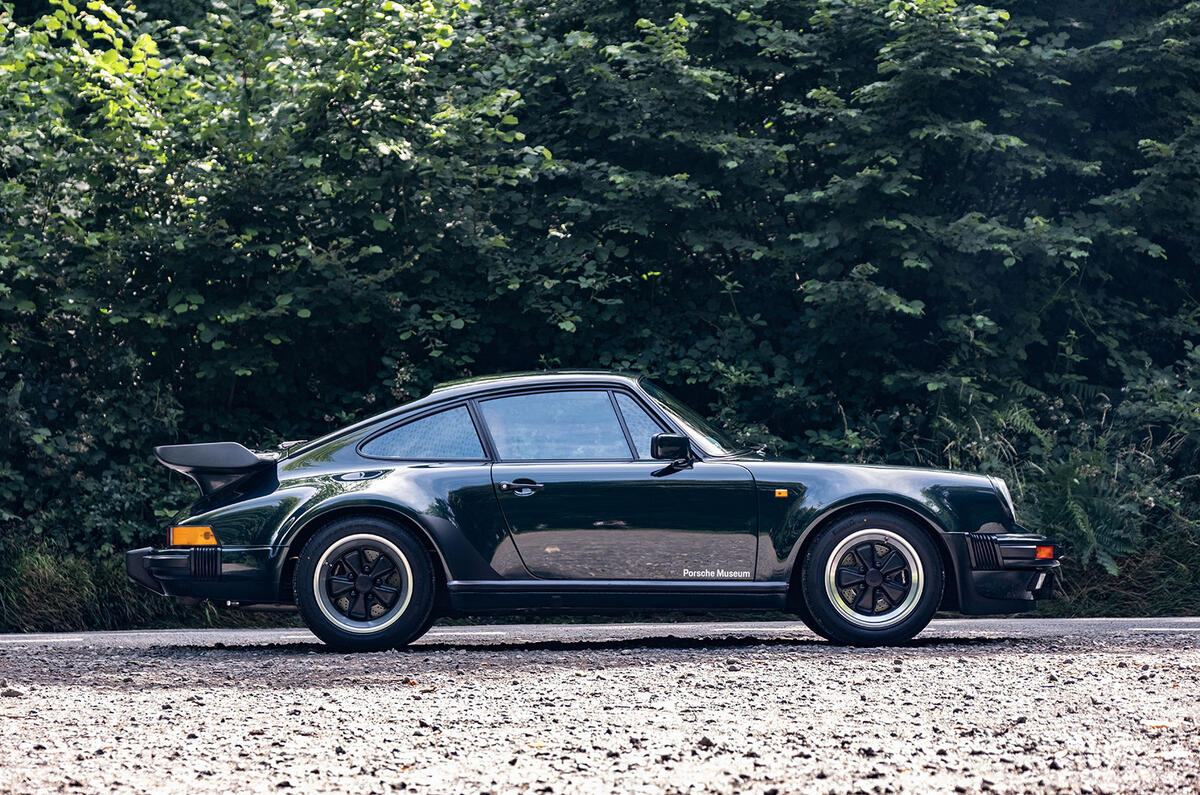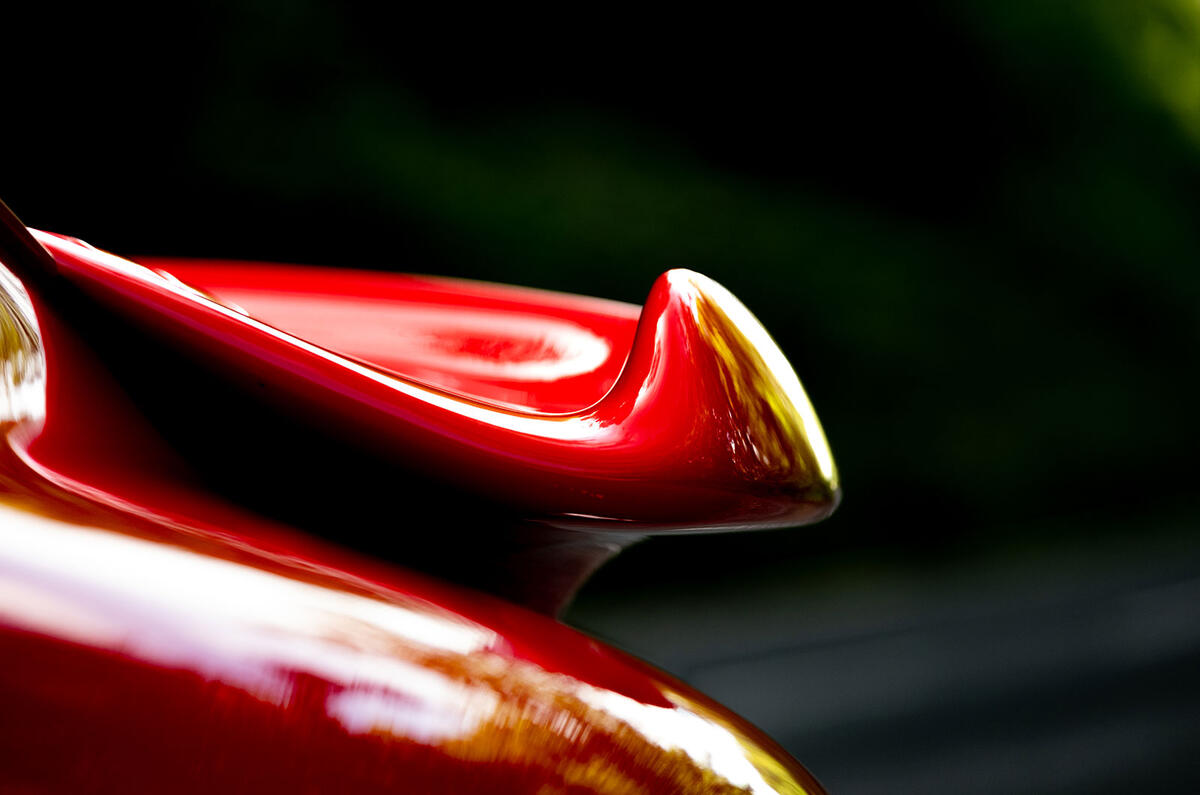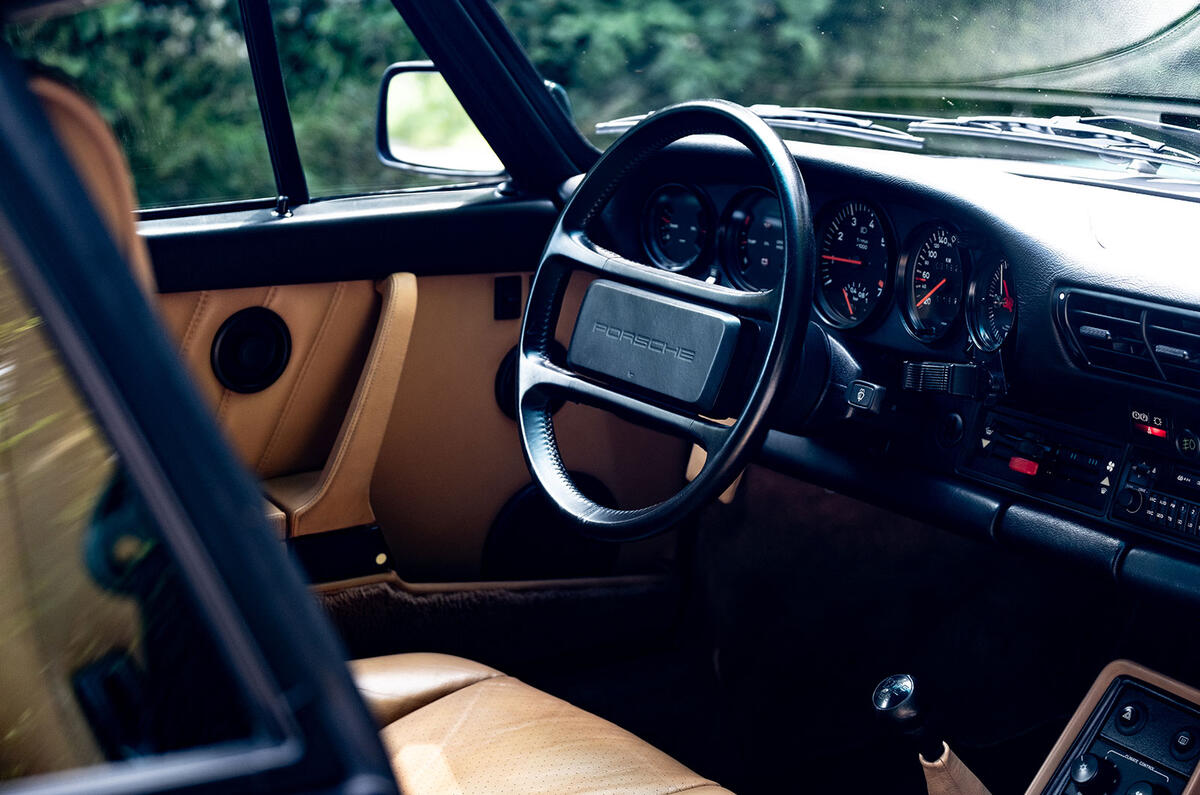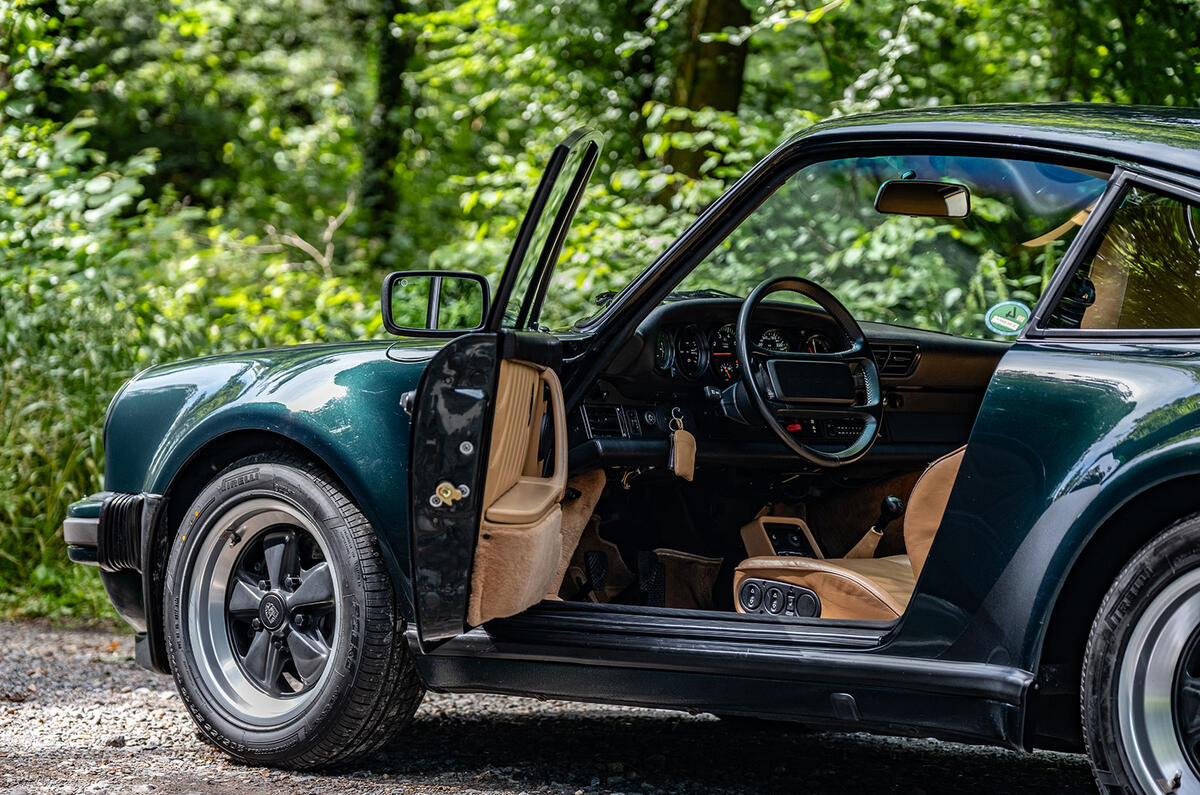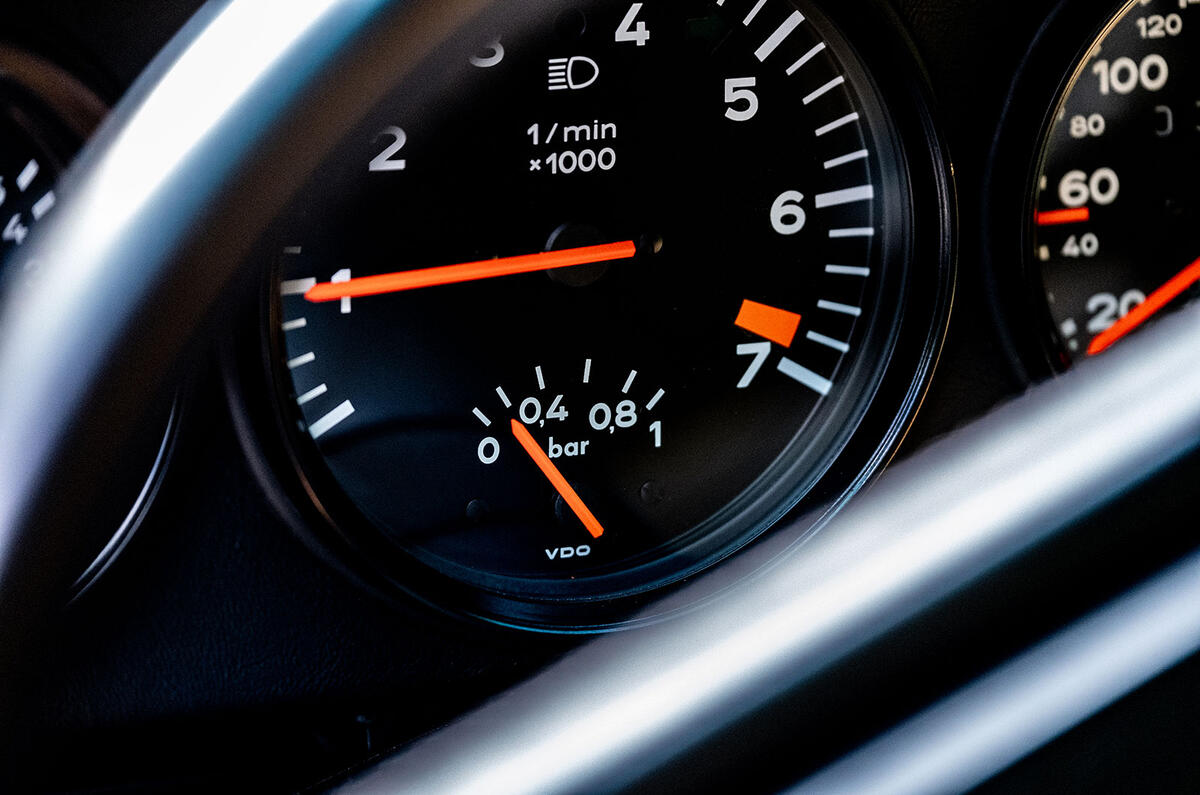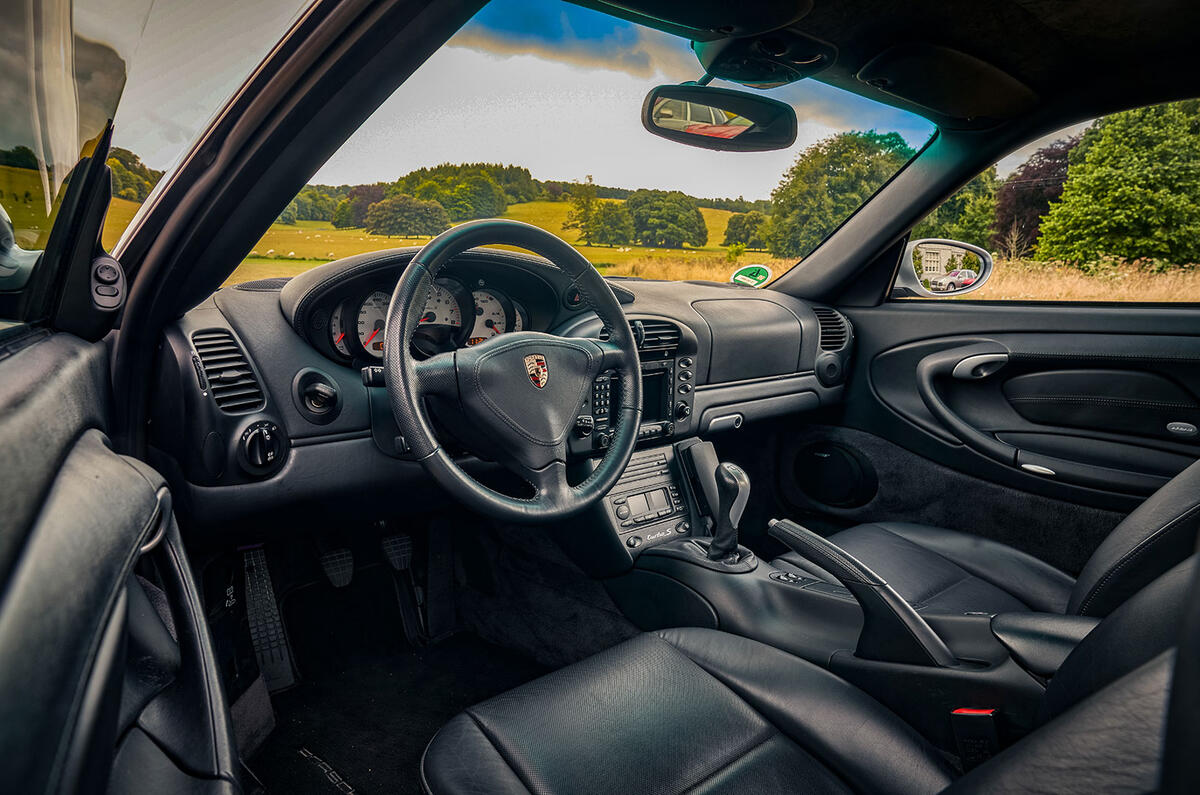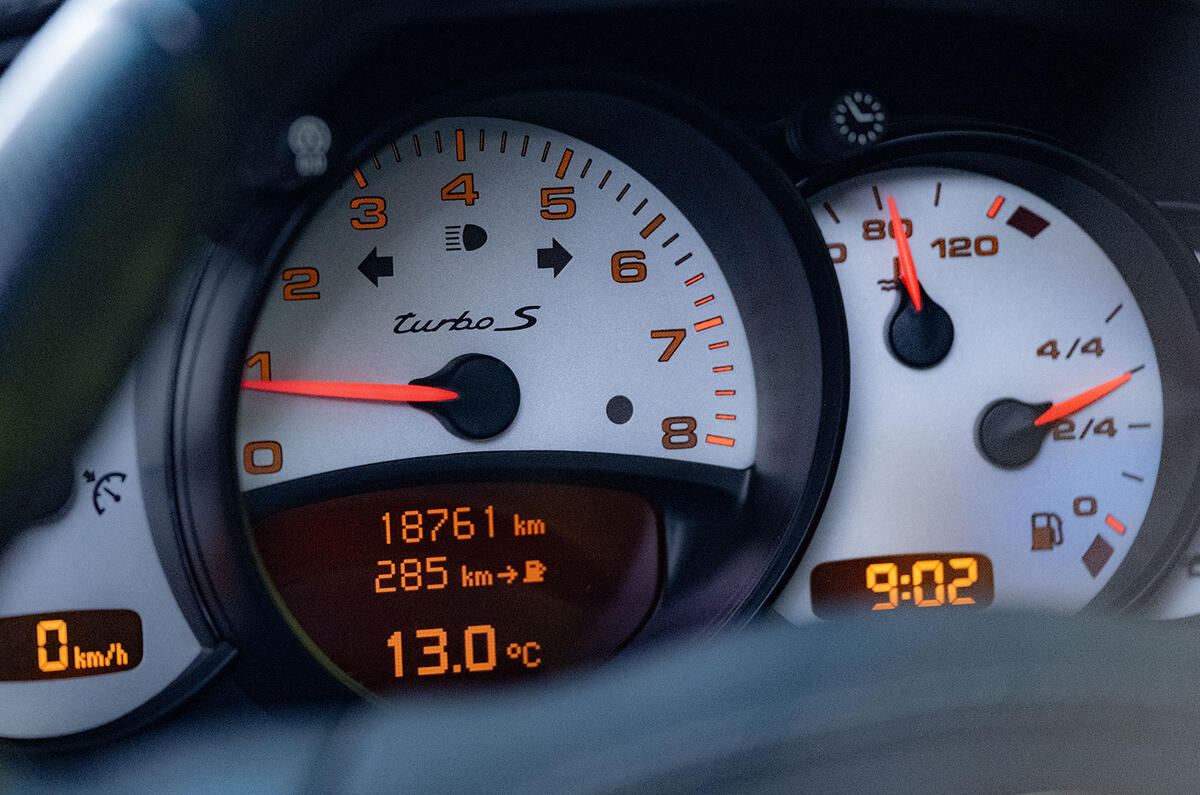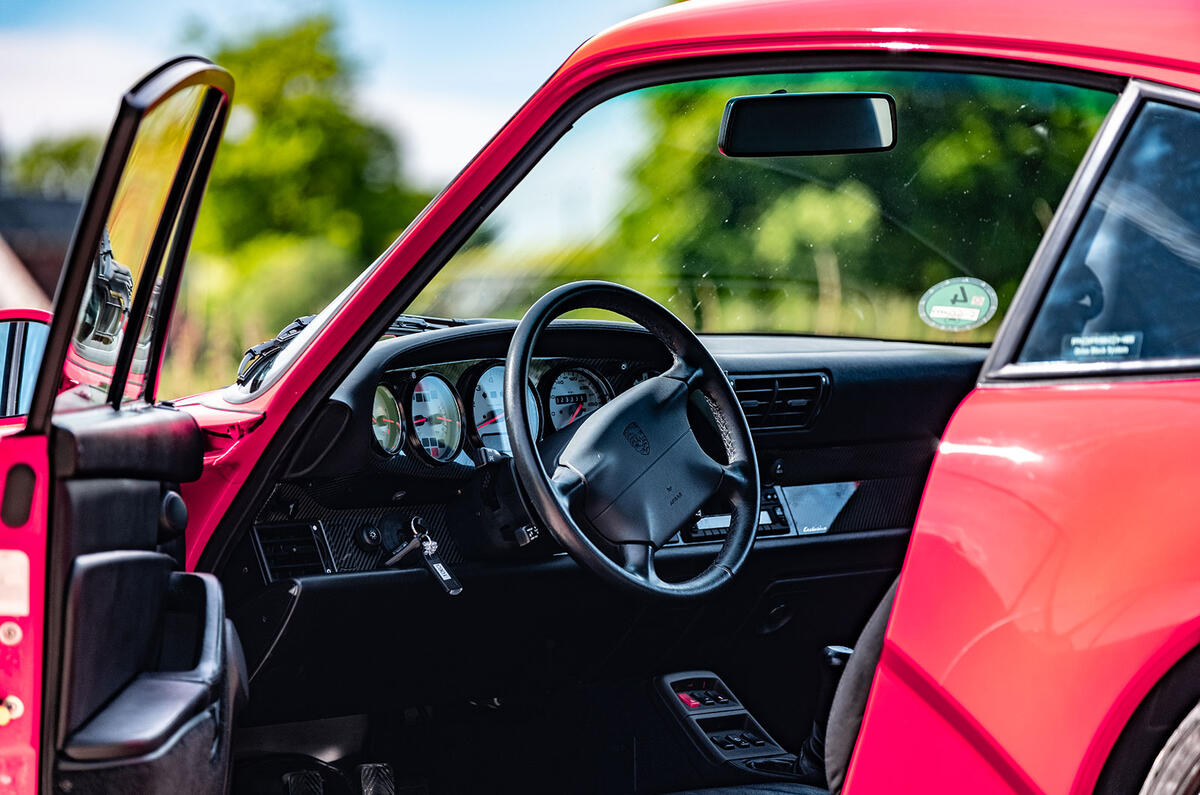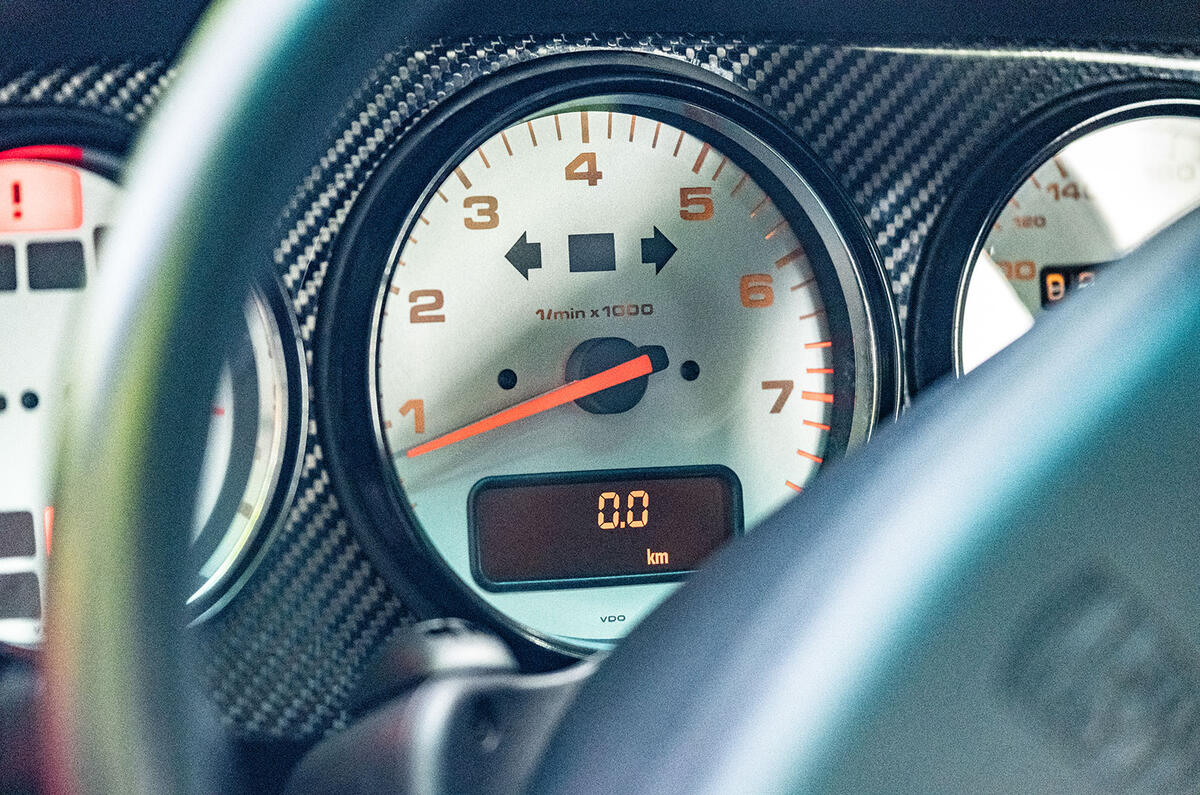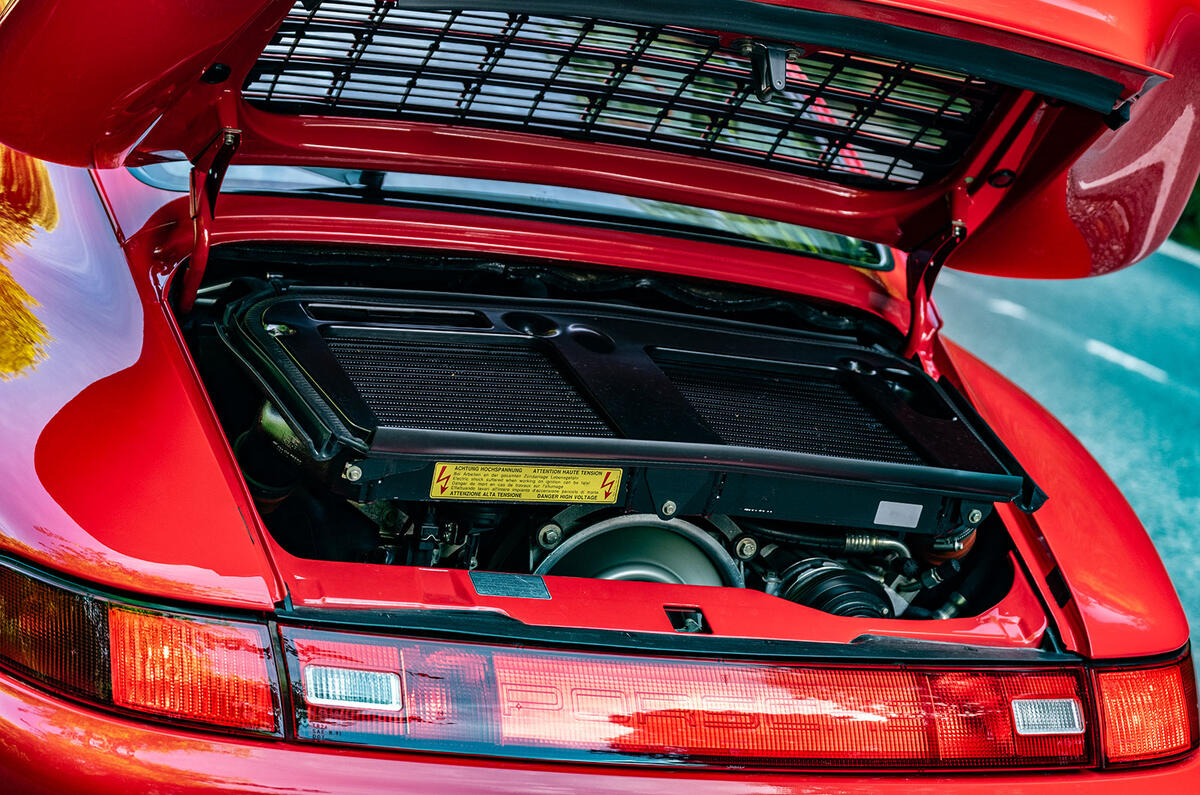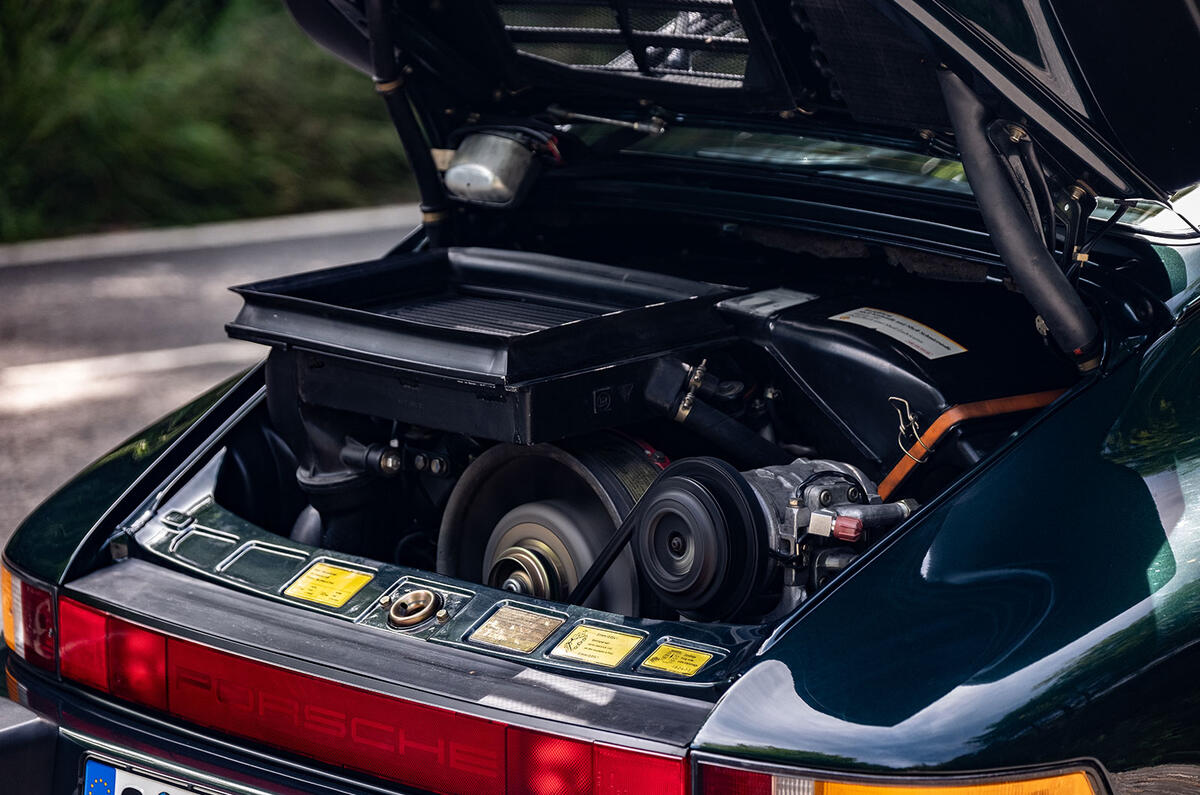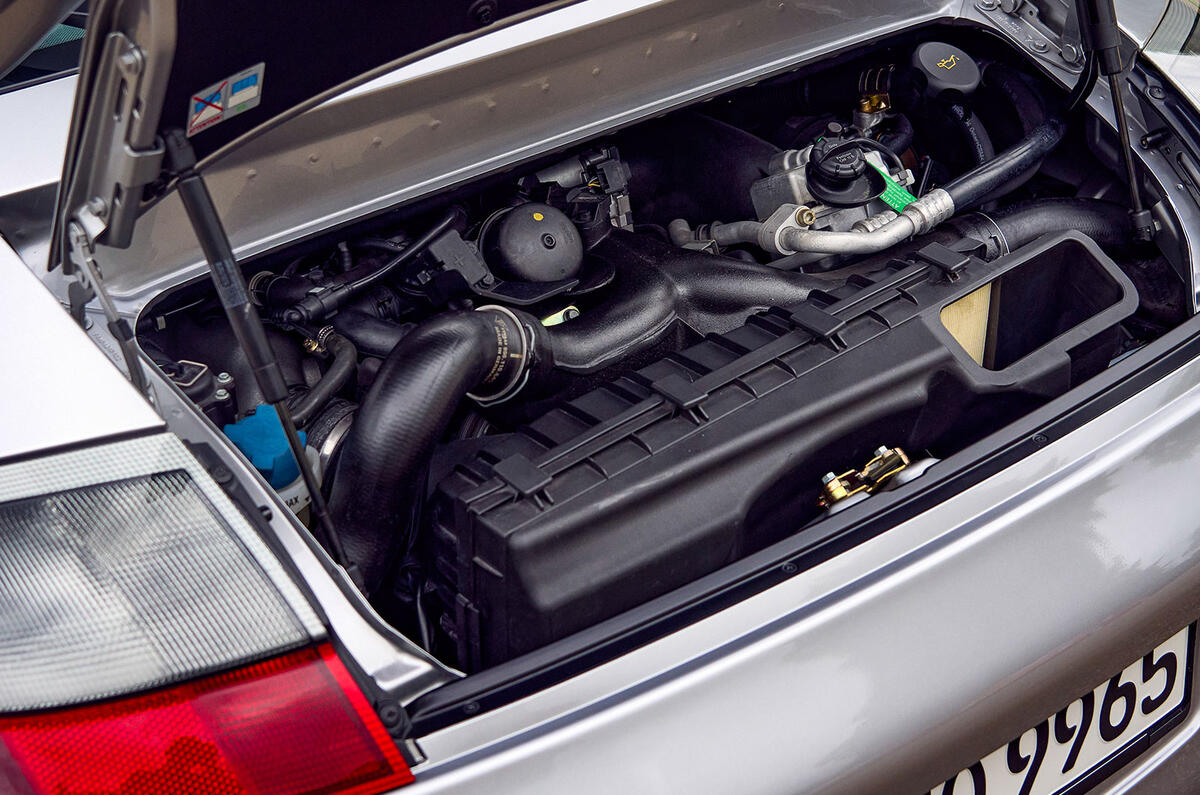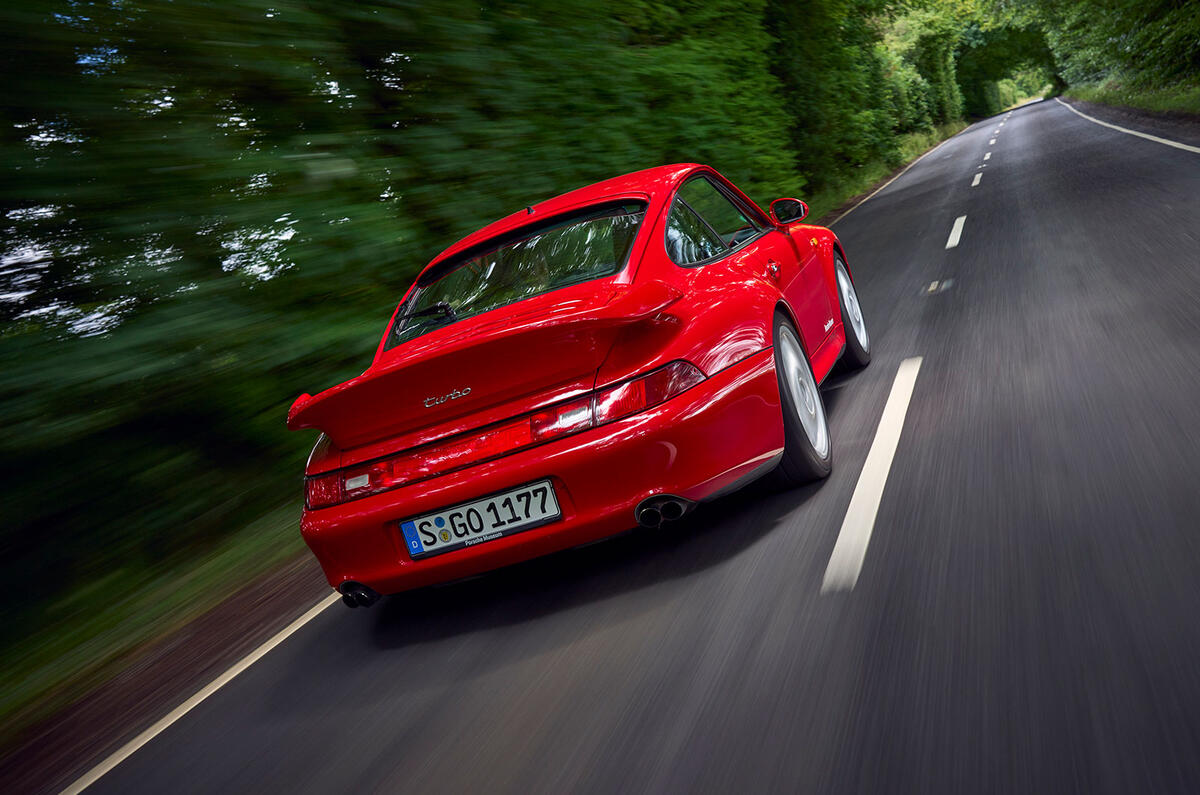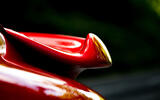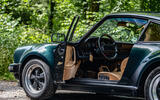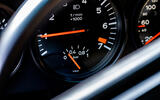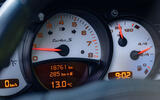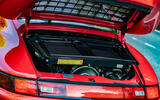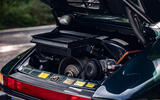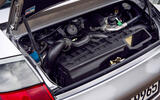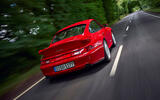Bruntingthorpe, 20 years ago or so.
It’s the day of Autocar’s 0-100-0 showdown, and a nasal-sounding Porsche 911 with crescent-shaped cutouts in its flanks has just split the difference between two cars that, by comparison, are so ‘super’ they may as well have turned up wearing capes.
One of them is a flyweight Pagani costing three times as much as the Porsche. It has, by the lacquer of its carbon clamshell, escaped with dignity intact, wailing to 100mph and back with 1.18sec to spare over the Porsche.
Not so spared are the blushes of the Murciélago. The Lamborghini has twice the piston-count of the Porsche and a kerbside malevolence that renders the German coupé all but invisible. Yet it gets eaten alive. Beaten to 30mph, then to 50mph. By 100mph the delta is wider still. Twisting the blade, the 911 stops harder, underscoring its status as everyone’s favourite giant-slayer of the early noughties.
For your barely teenage scribe, gripped by the resulting report in the magazine (25 September 2002 if you're interested), this was real heroic stuff from a little 911.
As if the speed alone – still a much-admired commodity in 2002 – wasn’t enough, the Porsche’s aura was enhanced by it being so obviously the underdog, and by it being considerably more relatable than the V12 exotics. Anybody, even a 13-year-old in Cardiff, could head to their nearest dealer and ogle one of these freakish, Clark Kent-esque creations – and perhaps even slide behind the dials for a moment or two, if you asked nicely enough.

As for the silver 996-generation Porsche 911 Turbo S at the heart of the story, the Bruntingthorpe dusting of at least one blue-blooded Italian was merely business as usual. Punching up is a hereditary trait for a 911 Turbo.
Has been since 1974, when Porsche inserted itself into the conversation with the Lamborghini Countach LP400 and the flat-12 Ferrari 365 GTB BB by fitting a KKK turbo to the engine in the Carrera RS 3.0 and creating the Type 930.
This Ur-Turbo, if you like, was a proper homologation special, paving the way for blown, 200mph-plus 911s in sports car racing. But the 930 wasn’t just about having enough speed to go toe to toe with huge-capacity, atmospherically aspirated supercars. It also had decent ergonomics, and came armed with all the leather and high-end electronic amenities you could wish for. And back seats. It was arguably the most complete high-performance car ever put on the road.
Fast forward half a century and six iterations. Porsche Turbos still follow the same blueprint: luxury to match obscene pace, with a good dose of usability and, of course, that 911-typical handling appeal.
Dig out our road test of the current 911 Turbo S (10 August 2022) and you will learn about a car that can nail 60mph in 2.5sec, cool air caressing your face and soft rock flowing from the Bose speakers as 590lb ft is seamlessly force-fed through the PDK ’box to all four corners.

In terms of the raw experience, a full-bore launch in the latest do-all 911 is, for me, more awe-inspiring than what any flash hyper-EV can muster. Its 3.8 fizzes at 5500rpm before the primary clutch engages, then whoosh: Turbo Time. Of course, day to day, the thing is no trickier to drive than a humble Carrera.
So enduring is the Turbo’s tale that each of us will have an allegiance to a certain derivative, usually the one that fired our imagination at a formative age.
The whale-tailed 930 – thrust upon an unsuspecting world in 1974 – is the stuff of bedroom-wall legend and became such hot property during its long life that, even as the end-of-production date neared in July 1989, examples were changing hands for nearly £200,000, well in excess of the £56,000 RRP.
For Gen Xers, the curvy 993-gen Turbo is now even more sought after. This evocative 911 uses a race-style set-up with small, responsive turbos – one for each bank, puffing in parallel, rather than the sequential arrangement of the only other twin-turbocharged, road-going Porsche at that point: the science-fiction 959. The 993 Turbo was also the car that brought about a self-imposed law at Zuffenhausen.

Anything exceeding 400bhp would need four-wheel drive. That rule didn’t last long, but it shows what a monster its maker considered the 993 to be. Loyalty to my teenage self dictates that my own affections lean 996-wards. To the giant-slayer.
There is perhaps something a touch apologetic in this car’s demeanour compared with other iterations of Turbo and, as the first of the water-cooled cars, it also goes without the old-school 911 fan whine. But it’s still a special 911, and currently the most tempting Turbo as a used buy, with prices for 414bhp non-S cars starting at £26,000 if you go for higher mileage and the Merc-supplied auto ’box. Not bad for what was once the world’s quickest point-to-point road car.
And now, 20 years after reading about that day at Brunters, the key to one of these relatively restrained-looking, 996-gen Turbos finally sits in my hand. Excited? Just a bit. Frankly, it’s amazing how the mere details of a car, seen up close, can evoke such a frighteningly deep sense of nostalgia and of the passage of time.
In the case of this car, my eye is drawn to the theatrically articulated wing; the skull-socket intakes in the front bumper; to the very cohesive, near-flatnose smoothness of the bonnet, wings and Hella headlights; the cut-outs at the edges of the rear apron, there not to cool anything per se, but to create a vacuum that helps drag air through those characteristic intakes in the haunches to the engine’s intercoolers.
In fairness, the 996 is a dramatic thing all right, and nostalgia is certainly a powerful drug. I can see why someone might pay £150,000 for a half-decent RS Cossie.
As for how we have ended up with the keys to a near box-fresh 996 Turbo, it’s down to fortuitous timing. This year is the 50th birthday of 911s bestowed with high-pressure status, and Porsche has freighted this particular car – a 12,000-mile Turbo S – over from the marque’s world-famous museum collection in Stuttgart for the Goodwood Festival of Speed. And, oh boy, is it an utter honey.

GT Silver, three pedals, barely a crease in the leather seats. It’s joined by a similarly low-mileage 930 and a late 993 that even at a standstill has bottomless charm. They cover only three of the seven generations of 911 Turbo but are nicely representative. The 930 got the ball rolling in 1974, the 996 set the tone for the modern-era Turbo as we now know it, and the 993 bridges those two worlds.
We should probably get on and drive the things, starting with the 996. The 911 Turbo of the millennium may not have been blessed with the finest cabin or the most charismatic looks, but it packs a legendary motor.
Not that you would know it at first. This 444bhp flat six, precisely 3600cc in volume, fires quickly and quietly, such that you really have to concentrate to pick out its various mechanical idiosyncrasies.
Then, out on the open road, even by the comparatively muted standards of turbocharged high-performance motors, it isn’t exactly effusive, delivering a breathy wall of propulsive muscle that is exciting more for its unrelenting physicality than its emotional appeal.
This engine’s specialness resides in the fact that its design largely mimics that of the 1998 Le Mans-winning Porsche GT1. The unit is unrelated to the 3.4-litre flat six in the backside of the mainline 911 Carrera, which was intended only for street application.
This may or may not be fresh information to you, but at the time Porsche needed to homologate an engine for its 911-based racers – a painfully expensive undertaking given the small volumes involved. Step forward the 911 Turbo.
If the Turbo could use a blown version of the dry-sumped GT1-style flat six earmarked for the racing 911s (and their road-going GT2/GT3 counterparts), costs would be better recouped.
As a consequence, the 996 Turbo carries an engine not only massively powerful but also tough enough for motorsport, with links to the 962. Porsche geeks would call it a real ‘Mezger’ engine, after powerplant supremo Hans Mezger.
There’s something undeniably special about having such an engine secreted away behind you. Elsewhere, this 996 is certainly more silken on the move than expected.

It feels physically compact and rides really quite beautifully on soft springs, with suppleness and surety and none of the reactivity of the 993 we also have here. It is quite clearly the car that set the tone for the 911 Turbo as we know it today.
That the body-in-white is half as torsionally stiff again as its predecessor’s helps the 996 feel modern, though there’s still the gentle, organic heft in the steering that disappeared when Porsche switched from hydraulic to purely electric assistance in 2011. Betraying the car’s age is the long gearshift throw and the high-set driving position, though these aren’t at all deal-breakers.
Whatever the conditions, a 996 feels easier to travel supersonic in than pretty much anything else on four wheels – except, perhaps, a later 911 Turbo.
After swapping into the other cars, a curious picture emerges. Barring mechanical evolutions – the adoption of 4WD and twin-turbocharging from the 993 on, then the appearance of variable valve timing for the 996, and so on – all 911 Turbos famously fulfil the same role, yet the three here today are demonstrably different in character.
Interestingly, it’s the 993 – a car whose 398lb ft was so heady for its time that the clutch-spring pressure had to be raised to the extent that hydraulic clutch assistance was deemed necessary – that feels most closely related to the current 992-gen 911 Turbo. Even with an oversized steering wheel, it gets its goofy nose into bends with an effortless zeal that the more touring-flavoured 996 lacks.
This natural agility and a road-racer undercurrent make it fizzing, eccentric company. It also seems to have the most rear-biased handling balance of the three, though I suspect damp roads and a bit more commitment than I’m prepared to lavish on a museum-grade 930 might change the order in that regard.
The 930, by the way, is endlessly engaging and mechanically intricate in feel. This is a 3.3-litre car, which followed the 3.0-litre original, and is a 296bhp relic but not a cantankerous one, as you may have been led to believe.
What imprecision there is in power delivery is mitigated by the glorious transparency of the chassis. Lightness helps. At 1335kg the old boy weighs fully 265kg less than the 993, which in turn undercuts the 996 by 90kg.

It must be said the 1640kg of the current Turbo S doesn’t seem half bad by comparison. With 641bhp on tap, the 992 is easily the fastest Turbo to date.
They all have a roguish charm, but if the 930 is the personality type you would want as a lifelong friend, the 996 is the one you would want alongside you on a flight deck of a complex aircraft and the 993 is undoubtedly the one to go and get drunk with.
The commonality is of course the palpable effects of turbo boost, which has been largely, and perhaps a little sadly, mitigated in the more recent generations of 911 Turbo. Then there’s the fact that in 2016, when the Carrera swapped natural aspiration for forced induction, the Turbo’s USP was terminally undermined.
It makes these heroes of yesteryear all the sweeter. The monolithic, pneumatic torque of the 996’s GT1-derived motor is perhaps the most impressive outright, with VarioCam Plus giving the delivery linearity and a high compression ratio providing fine throttle response, even by today’s standards.
That said, the saw-toothed, high-rev rasp of the 930’s 3.3-litre unit makes it fascinating company, to hell with the comparatively tiny power band. It has an industrial, animal edge to it. The 993 resides in between. Perhaps 408bhp sounds tame in 2024. Believe me, it isn’t.
Though easier to modulate than that of the older car, this engine is fanatically boosty and the way it flings a diminutive 993 body down a country road is gold. Of course, all three give you the option of gearing up, planting your foot into the bulkhead at 2500rpm, and waiting for the scenery to blur.

For half a century, this ability to compress the road ahead of you has been at the heart of the 911 Turbo experience, defining it as much as those unmistakable wings. Now we must wait to see what course Porsche plots for this most storied sub-brand.
In the EV age, the Turbo’s outright speed is no longer anything to write home about. Meanwhile, still on Planet Petrol, blown engines can now be so artfully plumbed that throttle lag isn’t a factor.
If the 911 Turbo is to maintain its own identity, it may have to break the habit of a lifetime and put an emphasis on character before objective ability. Might we see a future 911 Turbo that is intentionally more boosty, for added excitement? Honestly, I doubt it – but at least the lengthy back catalogue isn’t half short of magic.

